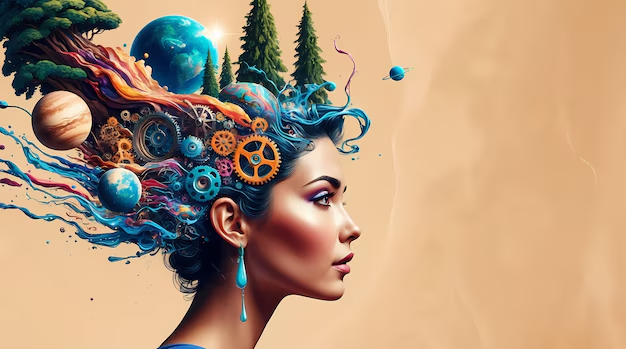Introduction
With the rise of AI-powered art tools, Linux users are joining the trend of creating images with artificial intelligence. The article will introduce readers to the advantages of using AI image generators, highlight Linux compatibility, and outline the purpose of free options available on Linux. This guide will walk through some of the most popular tools, show setup steps, and explain what makes each generator unique.

What is an AI Image Generator?
AI image generators use algorithms, typically based on deep learning models, to create original images from text descriptions or based on other data inputs. Many of these tools use models like DALL-E, Stable Diffusion, or GANs (Generative Adversarial Networks).
Why Choose Linux for AI Image Generation?
Linux offers flexibility, security, and control over the environment, making it an ideal operating system for resource-intensive applications like AI image generators. Open-source platforms also align well with Linux’s ethos, enabling greater community-driven advancements and customization options.
Top Free AI Image Generators for Linux
1. Stable Diffusion
Stable Diffusion is one of the most popular open-source AI image generators. Its powerful models can create detailed images from text prompts and are well-supported on Linux.
- Features: Highly customizable, community plugins, supports large models.
- Installation Steps:
- Install prerequisites such as Python and virtual environments.
- Clone the Stable Diffusion repository.
- Set up the model and dependencies.
Chart: Stable Diffusion Pros and Cons
| Pros | Cons |
|---|---|
| High-quality images | Large memory requirements |
| Extensive community support | Setup can be complex |
2. DALL-E Mini (Craiyon)
DALL-E Mini, now branded as Craiyon, is a light version of OpenAI’s DALL-E model. While less powerful than DALL-E 2, it’s lightweight and accessible for Linux users.
- Features: Text-to-image capabilities, user-friendly interface.
- Installation Steps:
- Install Python and relevant libraries.
- Run the DALL-E Mini repository locally on your Linux machine.
Chart: DALL-E Mini vs. Stable Diffusion
| Feature | DALL-E Mini (Craiyon) | Stable Diffusion |
|---|---|---|
| Image Quality | Moderate | High |
| Customization | Limited | Extensive |
| Resource Usage | Low | High |
3. DeepDream
DeepDream is one of the earliest and most experimental image generators, using deep neural networks to modify images into surreal and abstract visuals. Its uniqueness and lighter requirements make it an interesting option for Linux users.
- Features: Abstract art, hallucinatory effects, suitable for experimental art.
- Installation Steps:
- Install TensorFlow and other dependencies.
- Set up a DeepDream repository and load images.
Pie Chart: Typical Use Cases of DeepDream
4. Artbreeder (Web-Based)
While Artbreeder isn’t directly installable on Linux, it’s a free, web-based option compatible with Linux browsers. Artbreeder allows users to blend images and control various attributes.
- Features: Web-based, no installation required, collaborative editing.
- Use: Visit Artbreeder.com and start creating directly in the browser.
Bar Chart: Comparison of Installation Complexity
| Tool | Installation Difficulty (1-5) |
|---|---|
| Stable Diffusion | 4 |
| DALL-E Mini | 3 |
| DeepDream | 2 |
| Artbreeder (Web) | 1 |
How to Set Up AI Image Generators on Linux (500 Words)
System Requirements
Running AI image generators can be resource-intensive. Below are some typical minimum requirements for each tool.
Table: System Requirements for Popular AI Image Generators
| Tool | RAM | GPU | Disk Space |
|---|---|---|---|
| Stable Diffusion | 16GB | 6GB VRAM | 10GB |
| DALL-E Mini | 8GB | 4GB VRAM | 4GB |
| DeepDream | 4GB | 2GB VRAM | 2GB |
Step-by-Step Guide
- Install Dependencies: Ensure Python, CUDA, and required libraries are installed.
- Clone Repositories: Clone the repositories of the tool you plan to use.
- Configure and Run Models: Load models, configure virtual environments, and set up GPU usage.
Optimizing AI Image Generators on Linux (200 Words)
Optimizing AI image generators involves tuning settings for speed and quality. For instance, adjusting batch sizes, image resolution, and VRAM management can enhance performance.
Tips for Optimizing
- Batch Size: Lower batch sizes can prevent memory overflow.
- Resolution Management: Experiment with lower resolutions to save memory.
- Use CUDA/CuDNN: Leveraging GPU acceleration for faster processing.
Conclusion
Linux offers a wide range of options for anyone looking to explore AI image generation without spending money. By understanding the strengths and limitations of tools like Stable Diffusion, DALL-E Mini, and DeepDream, users can leverage these technologies effectively. Whether you’re a professional artist or simply experimenting with AI-generated visuals, these free Linux-compatible tools make it easy to dive into the world of digital art.
Also Read> Oasis AI Launches First Playable AI-Generated Game for Minecraft: A Revolution in Real-Time Gaming
Frequently Asked Questions (FAQ)
Can I run these AI image generators on any Linux distribution?
Yes, most AI image generators are compatible with major Linux distributions like Ubuntu, Fedora, and Arch. However, ensuring compatibility with CUDA and GPU drivers is essential for smooth performance.
Do I need a powerful GPU to run AI image generators on Linux?
While a powerful GPU will enhance performance and image quality, some lightweight tools like DeepDream or DALL-E Mini can run on lower-end hardware.
Are there any privacy concerns when using AI image generators?
Most open-source tools don’t collect data from your device. However, for web-based tools like Artbreeder, review the platform’s privacy policy for data practices.
Can I sell art created with free AI image generators?
Yes, many AI image generators are open-source and do not impose restrictions on commercial use, but always check individual licensing for commercial applications.
